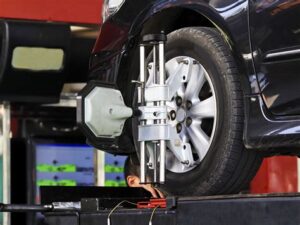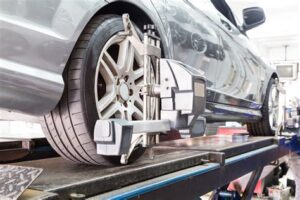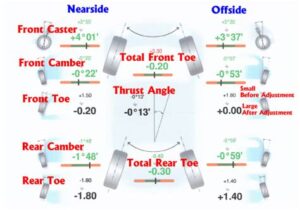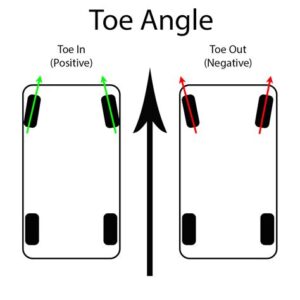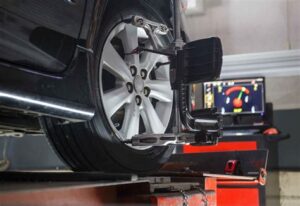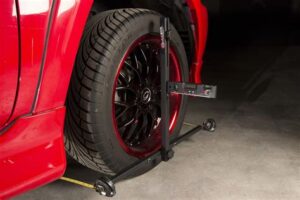Maintaining your vehicle’s performance is essential for safety, comfort, and efficiency, and one critical aspect often overlooked is car toe alignment. This intricate adjustment directly influences how your vehicle handles on the road. In this article, we’ll delve into what car toe alignment is, its significance, and how improper adjustments can lead to detrimental effects on your vehicle’s performance. We will identify key signs that indicate a need for alignment and guide you through the alignment process. Furthermore, you’ll discover the long-term benefits of proper toe alignment for your car. Whether you’re a car enthusiast or just someone keen on keeping your vehicle in peak condition, understanding and maintaining proper toe alignment is vital for optimal driving experiences. Join us as we shed light on this often underappreciated aspect of vehicle maintenance.
Understanding Car Toe: Definition And Importance
Car toe refers to the angle at which the tires are pointed in relation to the centerline of the vehicle. When discussing car alignment, toe is one of three key measurements, alongside camber and caster. Proper car toe alignment is crucial for optimizing vehicle handling, ensuring tire longevity, and promoting overall safety on the road.
When the front tires are aligned too far inward (toe-in) or too far outward (toe-out), it can lead to uneven tire wear, diminished fuel efficiency, and compromised steering response. This misalignment can often go unnoticed until it becomes severe enough to impact driving performance significantly.
Understanding the importance of car toe alignment means recognizing that it greatly impacts the vehicle’s ability to maintain straight-line stability and accurate steering. A properly aligned toe helps vehicles track straight, which is essential not only for comfort but also for safety during high-speed driving or on winding roads. Regular checks and adjustments of your car toe are essential maintenance practices that can enhance your driving experience and save you money in the long run. Investing time in monitoring and maintaining correct toe alignment significantly contributes to vehicle reliability and performance.
How Poor Car Toe Affects Vehicle Performance
Having incorrect car toe alignment can lead to a range of performance issues that not only affect the handling of your vehicle but also result in additional wear and tear. This misalignment occurs when the tires are not parallel to each other, causing them to point in slightly different directions.
One of the primary consequences of poor car toe alignment is uneven tire wear. When the angles of the tires are incorrect, certain areas of the tires come into contact with the road more than others. This can lead to bald spots, reduced tread life, and the need for premature tire replacements, which can be costly.
Furthermore, a poorly aligned car toe can negatively impact fuel efficiency. When wheels are misaligned, the engine has to work harder to move the vehicle forward, resulting in lower miles per gallon (MPG). This increased fuel consumption can add up significantly over time, making regular maintenance essential for your vehicle’s overall efficiency.
Another critical factor is steering responsiveness. A misaligned car toe can create instability while driving, causing the car to drift or pull to one side. This can make the vehicle more challenging to control, especially at higher speeds or in adverse weather conditions. Drivers may find themselves over-correcting, which can increase the risk of accidents.
Maintaining proper car toe alignment is crucial for optimal vehicle performance. By proactively addressing alignment issues, drivers can enhance tire longevity, improve fuel efficiency, and ensure a safer driving experience.
Signs That Indicate You Need A Car Toe Alignment
Maintaining proper car toe alignment is crucial for ensuring your vehicle operates efficiently and safely. Here are some telling signs that it might be time for an alignment check:
- Uneven Tire Wear: If you notice that your tires show wear on one side more than the other, it’s a strong indication that your car toe alignment is off.
- Steering Wheel Off-Center: When driving straight, if your steering wheel isn’t centered or feels crooked, this could suggest misalignment.
- Pulling to One Side: If your vehicle drifts to the left or right while you’re driving straight, that’s a clear sign of uneven alignment in the car toe.
- Vibration in the Steering Wheel: A vibrating steering wheel can indicate that the car toe alignment is not right, potentially affecting your vehicle’s handling.
- Decrease in Fuel Efficiency: Misaligned wheels can cause increased rolling resistance, leading to a drop in your vehicle’s fuel efficiency.
- Noisy Tires: If your tires are making unusual noises, it could be a symptom of poor car toe alignment and uneven tire wear.
Addressing these signs promptly can prevent further issues and enhance the overall performance and safety of your vehicle.
The Process of Aligning Your Car Toe Explained
Aligning your car toe is a crucial process that ensures your vehicle’s wheels are positioned correctly relative to one another and the road. This process can vary slightly depending on the vehicle, but generally involves a few key steps:
- Initial Inspection: A technician will begin by inspecting the vehicle to assess the current alignment of the wheels. This may involve using specialized equipment to measure the angles of the wheels accurately.
- Adjustment of Toe Angles: The technician will adjust the toe angles, which is the angle of the wheels in relation to the centerline of the vehicle. This may require loosening certain bolts and moving components to achieve the correct measurement.
- Verification: After adjustments are made, the technician will check the alignment again to ensure the settings are within the manufacturer’s specifications for proper car toe alignment.
- Test Drive: Finally, a test drive is usually performed to confirm that the vehicle handles correctly and that the effects of the alignment are noticeable in improved steering and reduced tire wear.
Proper alignment, including correct car toe, not only enhances performance but also contributes to the longevity of your tires and overall vehicle health. Regular checks and adjustments can save you money on tire replacements and improve your driving experience.
Benefits Of Proper Car Toe Alignment For Longevity
Maintaining proper car toe alignment is crucial not only for ensuring optimal vehicle performance but also for extending the lifespan of your vehicle. Here are some key benefits of attaining and maintaining correct car toe settings:
- Improved Tire Longevity: Correct car toe alignment ensures that your tires wear evenly. This reduces the frequency of tire replacements and can save you money in the long run.
- Enhanced Fuel Efficiency: When your wheels are properly aligned, your vehicle encounters less resistance. This can lead to better fuel economy, making your trips more cost-effective.
- Smoother Ride Quality: With proper car toe alignment, your vehicle will handle better, providing a smoother and more comfortable ride. You’ll notice fewer vibrations and improved stability during driving.
- Reduced Risk of Unforeseen Repairs: Misalignment can lead to additional wear and tear on other components like suspension and steering systems. By keeping your car toe aligned, you can help prevent future mechanical issues.
- Better Handling and Safety: Proper alignment enhances vehicle handling, which is critical for safe driving. This is especially important during emergency maneuvers when responsiveness is key.
Ensuring your car toe is correctly aligned not only fosters a more enjoyable driving experience but also protects your investment in your vehicle by promoting its longevity. Regular inspections can help you optimize these benefits and ensure your vehicle remains in top condition.
Frequently Asked Questions
What is car toe alignment?
Car toe alignment refers to the adjustment of the angle of the wheels in relation to the centerline of the vehicle. Proper toe alignment ensures that the tires roll parallel to each other, which promotes even tire wear and improves handling.
Why is toe alignment important for my vehicle?
Toe alignment is crucial because it affects tire lifespan, fuel efficiency, and vehicle handling. Improper toe angle can lead to excessive tire wear, decreased fuel economy, and uneven steering.
How can I tell if my car needs a toe alignment?
Signs that your car may need a toe alignment include uneven tire wear, your steering wheel being off-center, or the vehicle pulling to one side while driving.
How often should I check my car’s toe alignment?
It’s advisable to check your car’s toe alignment at least once a year, or more frequently if you notice any handling issues or after hitting a large pothole.
Can I perform toe alignment myself?
While some vehicle owners may attempt to perform minor adjustments themselves, it’s recommended to have toe alignment done by a professional mechanic using specialized equipment for precision.
What tools are needed for toe alignment?
Tools for toe alignment typically include a steering alignment gauge, tape measure, and possibly an alignment rack. Professionals may also use laser alignment systems for greater accuracy.
What could happen if I ignore toe alignment issues?
Ignoring toe alignment issues can lead to serious problems like premature tire wear, poor handling, increased fuel consumption, and even compromised safety on the road.
